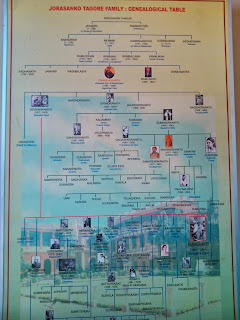Goddess Saraswati Worshipped In Japan
Japan is one of those countries who still nurture the elements of
Hindu religion and culture. For instance, the original form of
Sanskrit language is still in vogue in Japan : it is called
'Beejaksharas' (etymology of alphabets) or 'বীজাক্ষর লিপি'. Moreover,
'Siddham Script' (সিদ্ধম লিপি) of 6th century is still in use there
which is disappeared from India. There are schools in Japan where
teaching of Siddham script along with Sanskrit is still in vogue. A
milk product named 'Sujata' (সুজাতা) is there in the market. The story
of 'Payas' (পায়েস) giving ceremony by Sujata to Lord Buddha is still
very popular in Japan. The highest temple of goddess Saraswati is in
Osaka of Japan. Hundreds of temples are there in Japan where goddess
Saraswati and or Lakshmi are being worshipped. Besides these two
goddesses, other Hindu gods like Ganesh, Indra, Brahma, Garud, Paban,
Barun etc. are famous in Japan. Even deities forgotten in India are
worshipped in Japan. The god of death (যম) is called 'Emma' there.
Saraswati is related to river here in India, Japan has also
resemblance of this matter besides the harp of goddess.
The eminent researcher-photographer Benoy K Behl recently went to
Japan with a scholarship of Japan Foundation. During his research
work, he found the abovementioned facts there. Exhibition of these
photographs by B K Behl already praised by many countries. Now, in
Kolkata, the exhibition is running since 11th January'16 at Ashutosh
Centenary Hall of Indian Museum. "Indian Deities Worshipped In Japan"
named exhibition of photographs will run till 21st January'16
(11am-4:30pm).
--
A. B.
Hindu religion and culture. For instance, the original form of
Sanskrit language is still in vogue in Japan : it is called
'Beejaksharas' (etymology of alphabets) or 'বীজাক্ষর লিপি'. Moreover,
'Siddham Script' (সিদ্ধম লিপি) of 6th century is still in use there
which is disappeared from India. There are schools in Japan where
teaching of Siddham script along with Sanskrit is still in vogue. A
milk product named 'Sujata' (সুজাতা) is there in the market. The story
of 'Payas' (পায়েস) giving ceremony by Sujata to Lord Buddha is still
very popular in Japan. The highest temple of goddess Saraswati is in
Osaka of Japan. Hundreds of temples are there in Japan where goddess
Saraswati and or Lakshmi are being worshipped. Besides these two
goddesses, other Hindu gods like Ganesh, Indra, Brahma, Garud, Paban,
Barun etc. are famous in Japan. Even deities forgotten in India are
worshipped in Japan. The god of death (যম) is called 'Emma' there.
Saraswati is related to river here in India, Japan has also
resemblance of this matter besides the harp of goddess.
The eminent researcher-photographer Benoy K Behl recently went to
Japan with a scholarship of Japan Foundation. During his research
work, he found the abovementioned facts there. Exhibition of these
photographs by B K Behl already praised by many countries. Now, in
Kolkata, the exhibition is running since 11th January'16 at Ashutosh
Centenary Hall of Indian Museum. "Indian Deities Worshipped In Japan"
named exhibition of photographs will run till 21st January'16
(11am-4:30pm).
--
A. B.




Comments